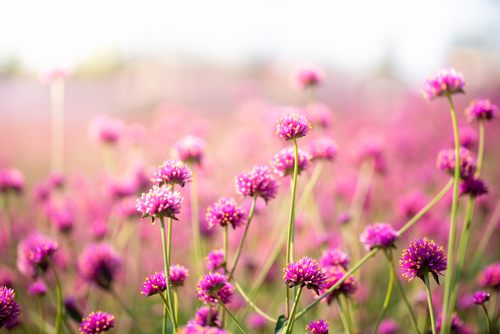
Longer days, warmer temps and blossoming flowers sounds like heaven to many people, but for some its sounds like bouts of stuffy nose, hay fever, headaches, itchy skin, eczema, fatigue, digestive issues and in severe cases anaphylaxis.
Why? … because the body is producing too much Histamine.
Histamine is a chemical our immune system makes for 3 major functions –
- Communication of messages to your brain (neurotransmitter)
- Triggers release of stomach acids to help digestion
- As a response to injury or allergic reaction
As you can see from this list that Histamine is a very important chemical and something we need every day, the problem arises when we have histamine build up – or TOO MUCH Histamine (called Histamine Intolerance) and annoying and frustrating symptoms arise.
How does this happen?
Poor digestion can contribute to Histamine intolerance – as there will be increased bacterial overgrowth causing histamine overproduction. Poor digestion can occur due to Irritable Bowel Syndrome, Inflammatory Bowel Disease or food sensitivities.
Along with making Histamine, we also make an enzyme called diamine oxidase (DAO) that is responsible for breaking down histamine that we take in from foods. If you have a DAO deficiency, then you are unable to break down the histamine, and you end up with an overload.
Why do your DAO enzyme levels change?
- Some medications block the production and function of DAO
- Foods that block DAO enzymes or trigger a histamine release
- Histamine rich foods that cause DAO enzymes not to function properly
Many people who have a histamine intolerance actively avoid their known triggers such as pollens and dust mites, and many take an anti-histamine each day – this can be a good way to achieve temporary relief, but not ideal long term as we need histamine for healthy brain and gut function.
Reducing histamine naturally by adjusting your intake of histamine rich foods and foods that trigger the release of histamines can also help control symptoms.
Common foods that are high in histamines or that can trigger histamine release and inflammatory reactions are:
- Fermented Foods – such as sauerkraut, kombucha, beer, soy sauce
- Bone broths or stocks, any “leftovers” of meat or fish
- Dried fruits – ie sultanas
- Avocados, Eggplant, Spinach
- Processed meats or Smoked Foods
- Fermented Dairy – such as aged cheese and yoghurt
- Shellfish
- Soy products – including soy milk, tofu, miso
- Vinegars
- Very ripe Banana
- Red foods that use histamine to ripen such as tomato, strawberries, raspberries, plums
- Papaya, Kiwi, Pineapple
- Citrus fruits
- Wheat germ and Yeast Extracts
- Sulphites and Benzoates – (200 numbers on food labels)
- Lectins – found in wheat, legumes and nuts
- Excess amounts of cocoa or chocolate
There are also foods that block the production of the DAO enzyme that you want to avoid:
Alcohol, Black tea, Green tea and energy drinks.
As you have just read, this list is long, and contains many healthy, yummy foods that I’m sure most people eat on a regular basis, and in recent years there has been a lot of awareness about including “gut healing” foods such as bone broths and fermented vegetables, kombucha etc – but as the saying goes there can be too much of a good thing !
Reducing histamine naturally via food intake doesn’t mean you can’t have these foods at all, but rather that you should limit your intake of them to help reduce symptoms. Think of it as a bucket ….. you can have a certain amount but you want to stop it from overflowing.
Here is a list of Low or Moderate Histamine Foods:
All vegetables except Spinach, Eggplant, Avocados, and Tomato
Fruits: Cherries, Mango, Figs, Apple, Blueberries, Melons
Fresh Meats and Fish: All – but they need to be freshly prepared, histamines increase the longer foods sits, so bulk food prepping should be avoided. Avoid canned, smoked or preserved.
Eggs
Grains – Rice, Quinoa, Buckwheat, a small amount of Wheat is OK – but avoid bread with yeast & fermented sourdough.
Drinks: Rooibos tea, Coffee, Herbal teas
Remember – it’s not about eliminating the high histamines foods altogether but making sure the bucket is not overflowing
If you usually have many of the high histamine foods each day, you may need to think about planning your meals so that you only have a certain amount in one day.
Easy switches can be:
If you usually have a salad for lunch with Spinach, Tomato, Avocado and Tinned Tuna/Beans dressed with balsamic vinegar
Try: Rocket/Cos lettuce with Cucumber, Carrot, Potato and Hard Boiled Egg dressed with Olive Oil.
If you would like more information or support on managing your diet please get in touch

